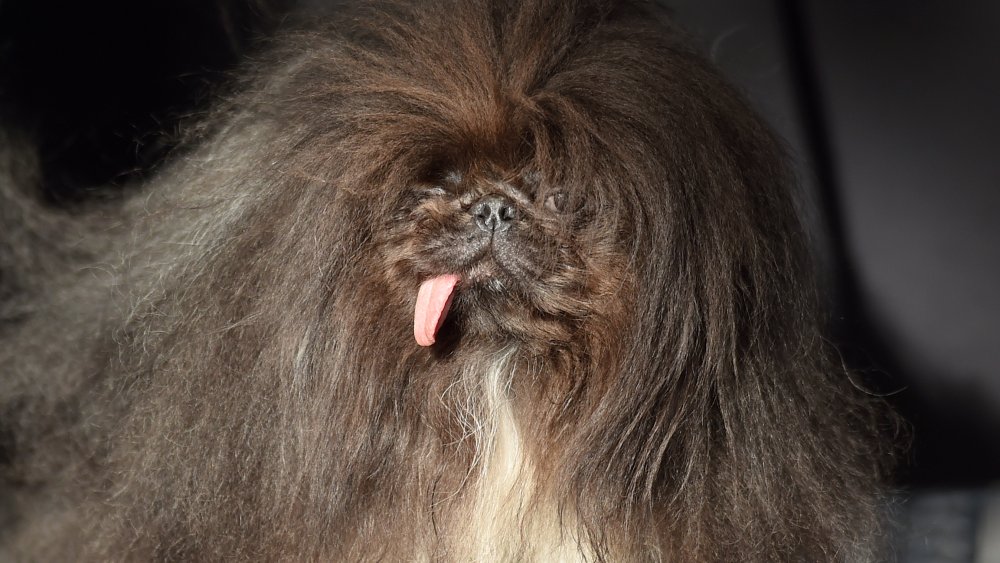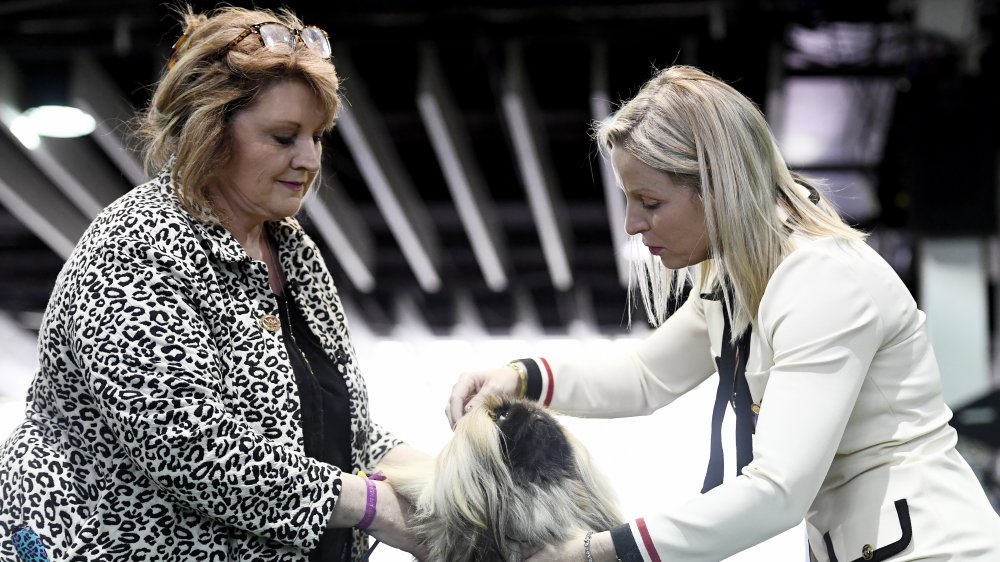What You Need To Know About China's Ancient Dog Breed
Do you love dogs, but wish they were smaller and goofier while simultaneously being historically considered a symbol of nobility within Chinese culture? That's a strange list of needs you have, soldier, but boy are you in luck.
Check it out: the Pekingese. It's one of the oldest dog breeds in the world, originating in ancient China. According to the American Kennel Club, they were originally created as companion animals for the ruling class, starting out in Peking (now Beijing) and owing their name to the same. They're small, brachycephalic, and described as "charming, confident companions who develop a tight bond with their favorite human."
And you know what? All of this pales to utter insignificance as compared to the most fascinating thing about them.
The Pekingese: a noble bundle of night terrors
If you don't know what "proptosis" means, do yourself a favor and never, ever Google image search for it. Basically, it's the book learnin' crowd's way of saying "wouldn't you know it, your eyeball just fell out of your head," and along with peeing on things and experiencing labored breathing for their entire lives, it's one of the Pekingese's favorite things in the whole wide world.
Proptosis, or "Total Recall syndrome" as we'd like people to start calling it, can come as a result of the Pekingese's abnormal skull shape. It's one of about a dozen different problems that can arise from brachycephalic ocular syndrome, a disorder caused by having too much eyeball in not enough head.
Ocular proptosis isn't strictly a Pekingese problem, and can also affect pugs, Boston terriers, and other short-snouted, bulgy-eyed breeds. It can occur due to blunt trauma, infection, or just a bad case of having a weird face. Luckily, if you move fast and have a good vet, the affected eye can frequently be saved.
And if that's not enough body horror for one day, did you know that you can get a tapeworm in your brain? What a time to be alive.

